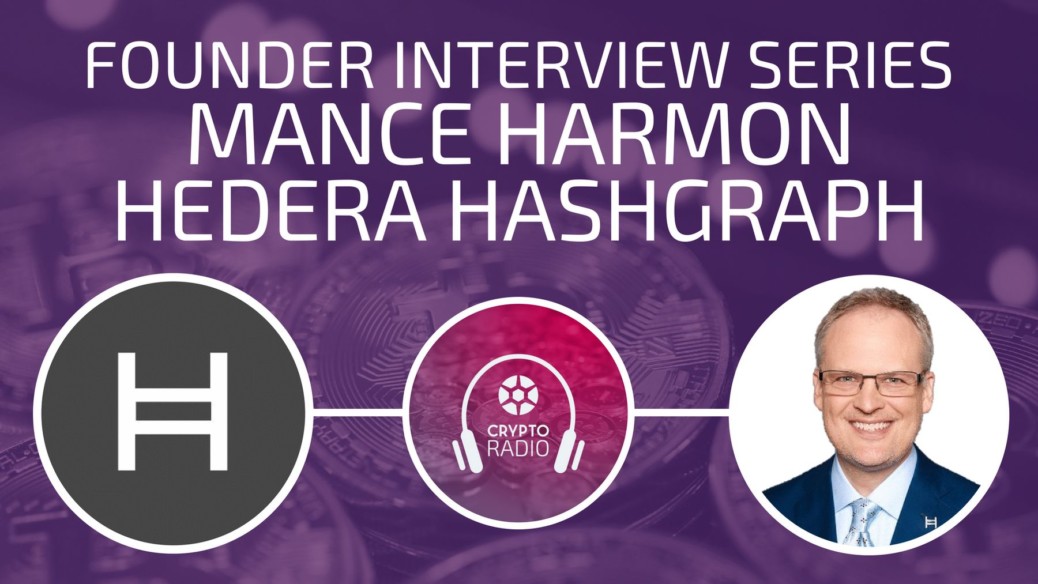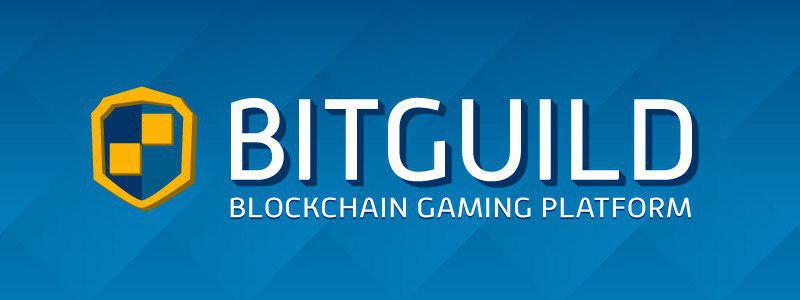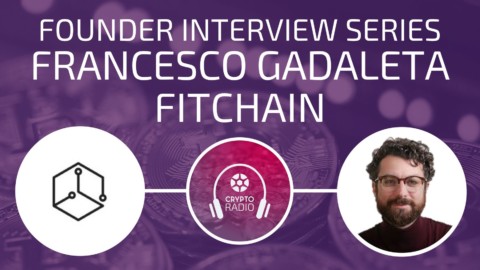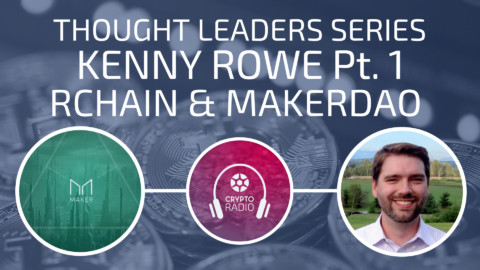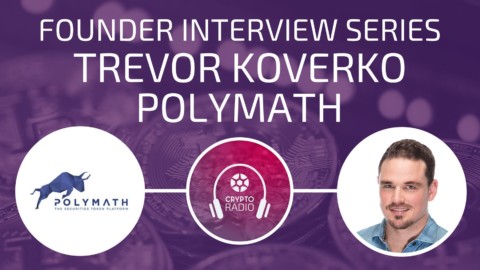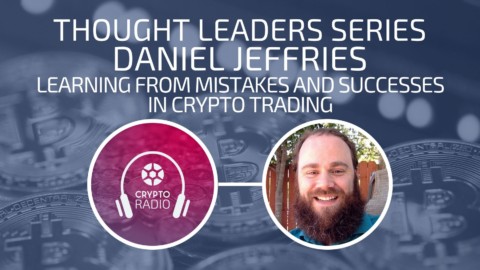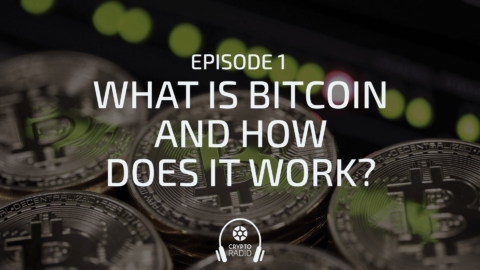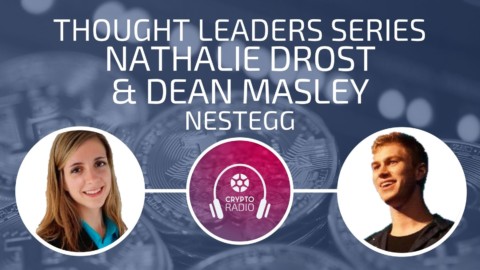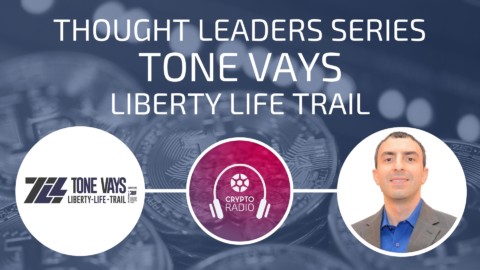Podcast: Play in new window | Download
Euvie: Hi crypto world. My name is Euvie Ivanova, welcome back to the founders series. Today on the show we have Mance Harmon, the co-founder and CEO of Hedera Hashgraph. Hashgraph is a platform that provides a new form of distributed consensus and a new decentralized governance model. In this interview, Mance explains the DAG technology behind and Hashgraph and its difference from blockchains. He talks about its potential applications to the IOT economy and why he believes that blockchains will be outperformed [00:00:30] by more advanced solutions. For all the links and show notes from this episode go to crytporadio.io/hashgraph.
This episode is brought to you by bitguild.io. Bitguild is a new gaming platform built using blockchain technology. Their mission is to redefine the relationship between gamers and game developers. On the Bitguild platform, gamers maintain full ownership and control of their virtual items, which are stored on the blockchain. They can transfer items and progress between [00:01:00] compatible games and they can make in game transactions safely and cheaply, and sometimes free. Developers who join the platform will get a direct link to an established player base, a strong community, and a network of likeminded developers building on the same platform. Developers will also have the potential for direct game development funding from Bitguild.
The first version of the Bitguild portal is now live. You can login with Meta Mask, buy the Plat token, and play Bitguild’s first game, Ether Online. They now have a full inventory wallet system for [00:01:30] in game items. In the coming weeks the marketplace will be implemented and several independent developers are joining the site to bring their unique games to the Bitguild family. Go to cryptoradio.io/play to start playing and join the Bitguild official Discord server to connect with the team.
Mike: Welcome to Crypto Radio. We interview the top thinkers and entrepreneurs in the blockchain and cryptocurrency industry. We also cover topics like trading, investing, and ICOs. We’re your hosts Mike Gilliland, Michael Paul, Chris Sparks, and Euvie Ivanova. [00:02:00] We’re entrepreneurs, crypto investors, and co-founders of a new blockchain investment platform called cosyndicate.io. We created Cosyndicate and Crypto Radio to make crypto investing a better experience for you. If you’re new to the show and you’d like a list of our top episodes and resources, go to cryptoradio.io/start. If you like our podcast, you can subscribe, share, and follow us on social media and leave us a rating and review on iTunes and elsewhere. It helps others find the show and we really appreciate it. You can find all those links at [00:02:30] cryptoradio.io/start.
Chris: Let’s hear your elevator pitch for Hashgraph.
Mance: Hashgraph is a fundamental advance in the field of [inaudible [0:02:41] consensus. The difference is equivalent to the difference between a calculator and a computer, in terms of performance. We achieve the best level of security that can be achieved in the field and, along with that, we’re putting together a governance organization that will be the [00:03:00] most decentralized organization governance body of any of the public platforms.
Chris: Awesome. What’s the most fundamental question that people ask you that people normally get wrong about the technology compared to, for example, DAGs and blockchain?
Mance: Compared to DAGs in particular, Hashgraph definitely is a DAG. The question is what this data structure represents. There are all kinds of graphs – a graph is just a mathematical structure [00:03:30] equivalent. The question is what the math represents. All the other DAGs in the market are different than Hashgraph because Hashgraph represents the communication flows across the network. It doesn’t have anything to do with transactions or cryptocurrencies or anything else. The DAG itself, the graph itself, represents how information is flowing between and [00:04:00] across the nodes on the network.
Once you have that picture, the picture of the flow of information, then it becomes possible to use traditional old school [inaudible [0:04:10] voting algorithms to come to consensus on the order of transactions, but you never have to send any votes over the network. All this is fairly technical and subtle. To answer your question directly, it has everything to do with what the DAG represents as opposed to whether there’s a difference in the DAGs themselves – there’s not.
Euvie: [00:04:30] Can we get an explain like I’m five version of what a DAG is?
Mance: Yeah, yeah. Let’s talk about the difference between the terms blockchain and Hashgraph and this would be true for DAGs in general. Blockchain as a term describes both the data structure, chain of blocks of transactions and it’s very linear. The community comes to agreement on what blocks go on top of the chain. Hashgraph is different – and DAGs in general are different – in that they aren’t a chain of blocks, they are a graph. [00:05:00] Each member of the network just submits transactions when they want as they want and they all get woven together into this data structure that looks like a graph on paper. That’s the fundamental difference.
In our case, each vertical line represents a person or a node in the network – if there are five nodes in the network, there would five vertical lines [00:05:30] that are in this picture. As transactions are submitted to the network, the transactions are reflected in this and they grow up with time. The vertical axis would be time and the horizontal axis would be the nodes in the network.
Euvie: Right, the big difference is that you can have multiple things happening in parallel, whereas in a blockchain it’s one block at a time and they are in chronological order?
Mance: That’s exactly right. It’s serial versus parallel, that’s the fundamental difference.
Chris: Okay, just to further [00:06:00] the elucidation or illustration, we talk about liquid democracy, for example, what sort of applications does Hashgraph have what somebody would recognize as a future tech solution?
Mance: A future tech solution… Most directly and relatively short-term, meaning in the next 10 years or less, I see a thing economy – I’m talking specifically about the internet of things here, IOT, where things can engage with other things in commerce, [00:06:30] they discover services provided by other things using a distributed things services directory. Then they engage in commerce with those things, they negotiate rates and solve problems that, today, are otherwise unsolvable. Some examples of this might be your lightbulbs, for example, in your home when they burn out. The fact that they’ve burned out is now reflected in what I’m calling a thing services directory that’s public, [00:07:00] it’s not owned by any single organization. It is a directory of all the things in the world and the services they provide.
If Amazon or Walmart were to search for the things that provide light – in other words, lightbulbs – in Dallas, Texas that are no longer functioning appropriately, they would be able to discover those using this new type of search engine that is distributed for things [00:07:30] and then they would be able to automatically bid on replacing those lightbulbs based on some policy that you, as a home owner, have set. You could say, “I will allow Amazon and Walmart and any number of other merchants to bid on the opportunity to replace the lightbulbs in my house as they burn out,” then they just show up and you use your cryptocurrency wallet to pay for this and the things that are engaging with other things, they have their own wallets and they’re paying [00:08:00] for services as necessary in this economy.
I think there’s a whole new type of economy that emerges and it’s not made up of just people, it’s made up of people and computers and things and it’s entirely distributed. It’s a marketplace. It’s a marketplace of thing commerce.
Euvie: Cool. How did the idea of Hashgraph come about? What’s the story here?
Mance: Yeah. My business partner, Leeman [inaudible [0:08:29] [00:08:30] back in 2012 had a vision for how he thought the internet should work. Basically, what we recognized is that, while the internet has grown up to be something really special and has change our lives fundamentally, it’s also become centralized in certain ways and there are now a number of service providers, tech giants, that have an enormous amount of control and power and [00:09:00] ability to mine our privacy and data and use it in ways maybe we don’t want them to use it. Leeman was looking for a way to make it possible for people to reach out and carve out a chunk of cyberspace and, in that chunk of cyberspace, be able to play together – games or whatever – be able to work together with business applications, be able to engage in commerce with one another.
But without having to trust any single central organization with [00:09:30] our data or privacy. He wanted to do that in a very general way – not just a cryptocurrency but make it possible for the services that we now depend on in our daily lives to become fully decentralized without there being a central organization that we have to trust. That’s the motivation for all of this and that’s the mission, I would say. It’s more than the motivation, it’s the mission of the company is to [00:10:00] enable that for the next generation of internet.
Euvie: Was Hashgraph being developed in parallel to Bitcoin and Ethereum and some of these other blockchains?
Mance: It was but it wasn’t influenced by them. The research actually started in 2012 and, of course, Bitcoin as a white paper was published back in 2008. Certainly, we understood that Bitcoin existed and blockchain more generally, but we also understood that they would never [00:10:30] be able to realize the vision that we had for this decentralized cyberspace. Leeman started in a fundamentally different place than blockchain and I think that’s been part of the problem is that most people took blockchain – as demonstrated by Bitcoin originally – and there have been a lot of variants on that. That’s been good, it’s driven the market forward, but it’s fundamentally limiting, as well. Leeman didn’t start there, he started in a fundamentally different place. Because of that, we’re able to do what we can do today – [00:11:00] Hashgraph is totally different.
Chris: What is your biggest criticism of blockchain technology as it stands today?
Mance: Look, I think it’s fantastic. It demonstrated, for the first time, it’s possible to do what we’re describing. This whole category is enabled because we now understand it’s possible to have, basically, the equivalent of a database shared by hundreds of thousands of parties and you can do that in a secure way. Just like any new technology category, [00:11:30] there are advances in the field and in the state of the art and the original designs normally get left behind and diminish with time, because they were, effectively, proofs of concept. I think that’s the situation today for blockchain. There are a number of different security concerns that one needs to deal with and you need to also achieve much better performance than what blockchain is [00:12:00] capable of achieving.
We could go down a list of the problems but, fundamentally, it breaks down into two categories – both performance and security. Hashgraph resolves all of those. There’s no single property or dimension or category of valuation that blockchain is somehow better than Hashgraph, it’s just not. Hashgraph is monotonically better in every way than blockchain as an algorithm. Because of that I [00:12:30] fully expect that blockchain as a technology, as an algorithm per say will diminish with time and Hashgraph and other approaches will take over.
Euvie: Who do you see as your competitors at this point?
Mance: There are a number of different companies that are building technologies that are attempting to solve the same problems with blockchains that we just mentioned. While I won’t name competitors by name, [00:13:00] I am comfortable talking about different approaches. Any approach that requires there to be a leader or has some sort of special master node or special witnesses that are representing the community as a whole, all of those, in the end, result in centralization of voting power and are also susceptible to certain types of attacks [00:13:30] distributed in all service attacks.
If you were to look at the different platforms coming to market, all the ones that I’ve seen have some element of that, some element of consolidation of voting rights or there are synchronist processes or there are leaders or master nodes, all of these cause both security problems and, in some cases, even performance problems. Hashgraph is different in that there are no master nodes [00:14:00] or special nodes, every node in the network is on par and equal to every other node in the network. From a technology perspective, I think what we will end up with the most decentralized public platform in the market, at least as decentralized as anything else, but then there’s the governance.
If you’re looking at public platforms, you really evaluate them on two different dimensions – one is the technology and its performance and how decentralized it can be and, secondly, [00:14:30] once the governance model… And what we’ve tried to do here with the Hashgraph is create a governing body that truly is the most decentralized governing body of any of the public platforms in the sense that it represents all constituencies across the globe. The governing council [inaudible [0:14:51] there will be a governing council of 39 members – these are the largest companies in the world with the best brands across [00:15:00] 18 sectors of business and geo distributed and they can’t be permanent members, they can be members up to 6 years. We tried very hard to ensure that we have representation from all constituencies around the globe on an ongoing basis.
Really, those are the two dimensions that we view ourselves as competing in, it’s decentralization of the technology, the nodes, the nodes themselves and security properties and performance properties associated and then the governing body. [00:15:30] In most cases, we believe that we’re most decentralized and most highly performant.
Chris: What does the hardware of your network look like? Is it micro [inaudible [0:15:39] in the same way that Iota plans to roll out their hardware?
Mance: No. It’s interesting, in our case the bottleneck turns out not to be the voting algorithm itself. The voting algorithm, Hashgraph, as a consensus algorithm is incredibly performant. We’ve already demonstrated [00:16:00] hundreds of thousands of transactions per second, putting transactions in order on a global network with just three seconds consensus latency or finality – three seconds to finality. The bottleneck turns out to be if those transactions are digitally signed, then you have to do signature verification. 250,000 signature verifications per second is hard for CPU.
We worked with one of the largest GPU manufacturers [00:16:30] in the world to create, in fact, they wrote a library for us that does signature verifications in parallel on GPU. What they were able to achieve is a million signature verifications per second. We believe that eliminates that as a bottleneck. Our solution is different in that we’re sharding and we will achieve scale through having thousands of shards and, within each shard, there are if not more than a few hundred nodes. Given that [00:17:00] architecture, I am expecting that just the use of GPUs will be sufficient for the time to come.
Euvie: Is the network already live or is it still in testing?
Mance: It’s in testing. This month we’ll be featured complete and we have a private test network up and running today. We’ve had one running for several months now. We will have partners – our initial beta developers, the ones building product on our platform, will begin doing that this month. We expect to be generally available [00:17:30] later in the year, hopefully by the end of the year we’ll be V1 and open for general availability.
Euvie: Cool. I wanted to ask you about your team. You already mentioned your co-founder and his background. Who else is on the team and what are their background, how did you guys all meet?
Mance: It’s interesting. Late last year we were raising money… I guess just a word or two about Swirlds. It may be important to understand the corporate structure here. There are really two companies involved. [00:18:00] Swirlds is the company that Leeman and I founded back in 2015 and we started by addressing enterprise use cases for permission networks, closed networks. We raised a little bit of money, three and a half million dollars. It was led by NEA. Through that fundraising effort, we met a few people that also participated in that round and developed a relationship with them. When it became time to spin out the public network, [inaudible [0:18:28], which we did late [00:18:30] last fall and operated in stealth until just a couple months ago, we brought them on board, some of the contacts that we made through the fundraising exercise.
The team today has grown significantly beyond that. The core team members are Tom [inaudible [0:18:48], who is in New York city. He’s the president of the organization, he has a finance background, deep finance and hedge fund management and a variety of finance related jobs. [00:19:00] Tom is the president of the organization. Patrick Hardy is our SVP of product. Patrick was the COT at Ping Identity, a major identity vendor. Patrick’s joined us a couple months ago as the VP of product. We also have Jordan [inaudible [0:19:17], who is the head of business development. Jordan is a successful entrepreneur, as well. He founded and ran Buffer VPN out of Budapest and sold that 18 months ago. [00:19:30] Did really well through that exit. Jordan has joined as head of bis dev.
We have Edgar [inaudible [0:19:36], also finance background. He’s standing up Asia, he’s head of Asia for us and based in Singapore. Christian [inaudible [0:19:44] is the chief marketing officer of the company. Christian was formerly the person responsible for product marketing and community development for Cassandra, the global [00:20:00] leading no sequel database, data stacks. There’s a company that popularized Cassandra – Christian led that effort for Cassandra. Ken Anderson is heading up the developer advocate team. He’s got a tech background, they live in Silicon Valley and he’s been part of multiple start-ups. That advocate team is in… I’ve forgotten how many different cities that we now have developer advocates.
We are in the process, as we speak, of standing up offices [00:20:30] in about a dozen different cities that are scattered across Asia and Europe. We just hired a head of Japan, a gentleman that will be joining us – we’ll announce his name shortly – in Tokyo. We’re going to do the same thing in Seoul. We’ll do the same thing in multiple cities throughout Europe. We have people in London, we have people in Canada and in Spain. I don’t even keep track, it’s hard for me to keep track of all the [00:21:00] locations that we now are in, because we’re growing so fast. We’re in this phase of hyper growth and hiring team members everywhere.
Euvie: Who are some of your advisors and partners that you can talk about? I’m just looking at your site now and I see that Dave Asprey is one of your advisors, that’s cool.
Mance: Dave is, yeah. We actually have done some podcasts with Dave. We use him for expertise or advisory services, if you will, for marketing related activities. We’re different in that most of the public [00:21:30] networks have a list of advisors in the way that you’re describing. Of course, we have a few of those, but the focus is not there. The governance council that we put together really is going to govern [inaudible [0:21:43] as an organization and that’s different than anything else that I’ve seen in the market. What I mean by that is there will be subcommittees that have oversite responsibilities for every part of the business.
For example, there will be a technical steering committee. There will be a finance committee. [00:22:00] There will be a legal and regulatory committee and several others, as well. Because we have the very best companies in the world – best in terms of brand recognition and market leaders in that each individual company represents tens of billions, if not hundreds of billions, of market cap. We’re pulling that world class expertise from those organizations into those subcommittees as appropriate to provide the oversite, policy, and strategy, [00:22:30] for the organization. This is unique in the industry in that we’re tapping into that level of expertise to run every part of the business in that way.
Euvie: Is this huge network going to be part of your marketing strategy, as well?
Mance: That’s an interesting question. When we talk the marketing strategy, [inaudible [0:22:50] as an organization of course has its own marketing function. We have a chief marketing officer and Zenobia is head of corporate communications, [00:23:00] on and on. It’s the case that we will have a committee that perhaps coordinates marketing and PR and IR etcetera with those 39-member organizations. It’s more than part of the story, it’s part of the product. What we’re offering is both the best security and performance in the market, but equally important is the governing council that will [00:23:30] help govern this organization, manage it, and ensure representation from every constituency around the globe. It’s both part of the product and, I guess in that sense, would be part of what is talked about in a marketing context.
Euvie: What are you guys doing in terms of getting adoption for the technology?
Mance: The interesting thing is the developers are coming to us. Part of that is that we are putting in place the standard kinds of [00:24:00] programs, the developer advocacy program, we’re going to have a full educational curriculum that will go live in not too many weeks that developers can do self-certification on the technology on the platform, that sort of thing. We do have traditional social media outlets for supporting the developer community. We’re going to do hackathons, we’re going to do a dev con which we’ll make announcements about in the coming weeks and months. All of those standard things and then, at the same time, [00:24:30] we are standing up a traditional dev channel.
The customers that we appeal to will be not just the start-up community and the community that’s building this new economy and this new category of distributed ledger technology, but the main stream enterprises and the consultancies that build their businesses around those enterprises, [inaudible [0:24:59] as a platform [00:25:00] is meant to be enterprise grade and appeal to mainstream markets in that way. Because of that, we have a traditional bis dev channel through the vars and the consultancies into the enterprise markets.
Euvie: Is there a token that you’re creating?
Mance: Yeah, absolutely. There are three services that will be running on top of Hashgraph as a platform that make up this public platform [inaudible [0:25:29]. [00:25:30] The three services are cryptocurrency as a service with native support for micropayments, distributed file storage, and smart contracts. We’ve taken the Ethereum virtual machine and just put it directly on top of Hashgraph, our Hashgraph consensus layer, making it backward compatible with all of the solidity scripts that are out there that work today.
They’re the three and the cryptocurrency is there. We are still finalizing the name, it may change but [00:26:00] the working name at the moment are HBars. If you look at that logo, the H with two bars in the middle, that technically has a name, it is called a HBar in the field of mathematics, so it very well could be that we end up calling our token HBar.
Euvie: That’s very geeky, I love it.
Mance: Yeah, it’s appropriate I think.
Chris: What’s the thing that excited you the most about Hashgraph and creating a future with Hashgraph?
Mance: It’s realizing the vision. The ability to change society for the better is [00:26:30] why we’re doing this. It’s an honour to be able to have the right technology at the right time and to have this kind of social impact that we envision. That will have far reaching ramifications that we still don’t even yet understand. For example, one of the initiatives that we’re pushing is a free and fair voting initiative. We’ve given a grant to the distributed ledger foundation that is now pursuing this. Just this [00:27:00] one initiative is meant to make it possible to have a democratic voting system that is fairer and mitigates the problems of coercion and lack of access to polling and the voting booths.
I think that this technology and this platform that we are building is going to change the face of the internet and it’s going to change fundamentally the way that society works [00:27:30] and ways that we still don’t even fully understand or comprehend – and that was the goal, the goal was to improve it for the benefit of real people. That’s what excites us, that’s the mission.
Euvie: Can we talk about your fundraising for a bit?
Mance: Yeah. We had a presale in an early seed stage, if you will, that we’ve previously announced. We raised 18 million dollars into [inaudible [0:27:53]. We are going through a strategic round where we’ll be bringing in [00:28:00] a presale that we can’t talk a lot about publicly, because of we’re domicile in the United States and, of course, that means that we have to comply with regulatory agencies and the SCC and that sort of thing. We are in the process of going through a significant round that will then turn into… We’ll complete that and then we’ll go into a period where we’re wanting to make it possible for the development community, developers, to participate directly.
We’re still [00:28:30] exploring what that looks like and how we can achieve that legally. I’m expecting it to look something like making it possible for developers to use tools to help us test the network, contributing to the development of the network and, in exchange for that, being given tokens so that they can use those tools and then keep the tokens that remain, getting the tokens out in a broad way to the developer community in general. Then there very likely will be an accredited crowd sale, [00:29:00] as well, later in the summer, making it possible for just those that aren’t institutions to participate directly in this, as well.
Chris: Is there a crowd sale date that we should know about?
Mance: There is no date but I am anticipating that will be late summer.
Chris: To keep on top of things, how can we and the audience make sure that we are best informed about what’s going on with Hashgraph?
Mance: Sure. There is a Telegram channel, I don’t know how many people we have in it today, I think we’re probably around [00:29:30] 35,000. I know a lot of people have joined that channel just to listen for information and keep tabs on what’s going on. There’s also a form on our contacts page at [inaudible [0:29:41] where you can register to be notified and express your interest, whatever that interest is. There’s a mailing list. Again, I think we’re somewhere on the order of 50,000 or 60,000 people that have registered to receive those email updates.
Those are two of the [00:30:00] most direct ways of registering to be notified and keep on top of everything that’s going on. We’ll be talking about how the testing goes and there will be future performance results that are announced. If you just have a general interest in following the progress of the project, that would be a reason to join or to sign up for the newsletter. If you’re a developer, same deal. We will be making available public APIs, the public API specification, [00:30:30] in not too many weeks so that those who have an interest and would like to comment and ask questions will be able to do so.
This is definitely a work in progress that is going to evolve over time. Also, the announcement of who our council members are, the 39 members that I’ve been describing and talking about, all of that today is private and we continue to work with those members until we get to the final form of governance. Then we’ll be making announcements about who [00:31:00] they are and who’s participating there. For all of these reasons, if any of these are of interest to you, then that would be a reason to sign up for the newsletter.
Euvie: Cool. Alright, let’s finish with a quick pitch for your project.
Mance: If you care about security, performance, and stability in a public distributed ledger technology, then we have a value proposition that is unequalled in the market in all respects. We welcome you [00:31:30] to join us. We expect to change the face of the internet. Our goal and vision is to improve it so that real people have better lives and we ask you to join us in this mission and come along for the ride.
Euvie: Awesome, thanks so much for joining us today.
Chris: We wish you the best of luck in disrupting everything, including blockchain. Thank you very much for joining.
Mance: Thank you.
Mance Harmon explains the technology and possible applications of Hashgraph, a platform that provides a new form of distributed consensus and a new decentralized governance model.
Mance Harmon is the co-founder and CEO of Hedera Hashgraph. Being a DAG (Directed Acyclic Graph), Hashgraph is a mathematical structure that represents the flow of information across the network and is not necessarily connected with transactions or cryptocurrencies. Unlike blockchain, which is linear, DAGs are chains of graphs which allow for multiple, parallel processes to happen at the same time.
Mance sees the application of the platform in future tech solutions for IoT economy, solving problems in commerce without having to trust any third party with your private data. Hashgraph provides high levels of both scalability and security, thus addressing the main problems with decentralized technology. For these reasons, Mance thinks that Hashgraph and DAGs in general will outperforme blockchains in time.
Another feature Hashgraph provides is a highly decentralized governance model and voting system that mitigates the problems of coercion and lack of voting access.
Resources:
- Mance Harmon
- Hedera Hashgraph website
- Crypto Radio’s Founder Series
This episode is hosted by:
This episode is sponsored by:

